#the pictures i used are basically the patron saints of their occupation / line of work! so that's not what they look like
Text




"The outer reaches of space remain unexplored by humankind to this day, but its greed is relentless. We grasp and yearn and hunger for knowledge— answers to questions we cry out into the endless void expecting to understand, expecting the stars to respond. The stars will not, but one day something else will— and we will not like what it has to say." — Rome Solomon, Beyond the Exosphere (1965)
taglist (opt in/out): @shellibisshe, @florbelles, @ncytiri, @hibernationsuit, @stars-of-the-heart, @vvanessaives, @katsigian, @radioactiveshitstorm, @estevnys, @adelaidedrubman, @celticwoman, @rindemption, @carlosoliveiraa, @noirapocalypto, @dickytwister, @killerspinal, @euryalex, @ri-a-rose, @velocitic, @thedeadthree
#obscura#edit:rome#nuclearocs#nuclearedits#ok so. ok hi. red and i made a new universe hi. sorry. morris quincy victor and eleanor belong to them the rest belong to meee :3#the pictures i used are basically the patron saints of their occupation / line of work! so that's not what they look like#anyway it's a mix of paranormal stuff + lovecraftian horror + sort of zombies :^)#they're like. the domains of lucifer (demons) behemoth (zombies) and leviathan (the eldritch horrors that happen in space and oceans)#who are like. the three evils that torment the mortal realm#it's all in a historical setting kind of parallel to our world? so a bunch of historic events are the same but it's like#a little bit more advanced with technology but at the same time it's not. it's Just A Little Different y'know#rome's sister went to space for a mission and just straight up went missing which prompts him to become an astronomer#and he's the first one to start speculating the existence of leviathan as eldritch god#morris is a technician at the academy who has an angel stuck in his computer#eve is a nun and herbalist who witnesses the influence of behemoth firsthand through some sick travelers#that she and the other nuns of her convent take care of#anatoly and quincy are both from different space missions who end up as the only survivors who are not basically a plant#the other two survivors have secretly been replaced with some sort of parasites. annihilation style if you've seen that movie#eleanor is a demonologist and works together with her brother victor who's her cameraman#clarence is a blind psychic who lost her sight because of an angel trying to warn her and in return got her psychic abilities#and lazarus is one of the two most famous demonologists in the world but his wife (the other one) passed away#so now he's alone and since he's not from an upper class family like his wife was he's not all that loved as she was#there's a lot going on but it's SO fucking fun to work on so far. feel free to send any asks i would love to explain more :^)#if you've made it this far also hi i love you. kiss for you
42 notes
·
View notes
Text
Day 150: Communism, Art-Nouveau, and World War II
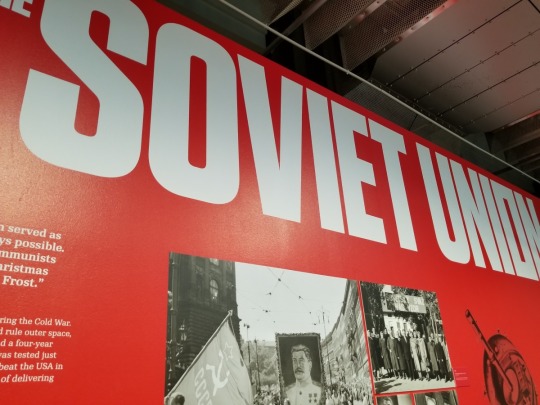
For our second day in Prague, we explored some of the highs and lows of Prague’s tumultuous 20th-century history: the Museum of Communism, the Alfons Mucha Museum, and the Memorial to the Heroes of the Heydrich Terror. The three sites span the arc of Prague's New Town, so we also got to see more of the city's 20th-century architecture as we walked between them.
We started the day with a sweaty 15-minute walk to the Museum of Communism, just a block away from where we saw Swan Lake the night before. It wasn’t even 10 am yet, but it was already pushing 90 degrees and humid.
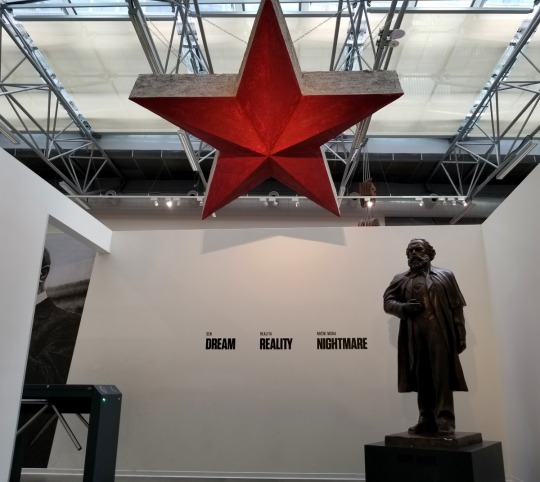
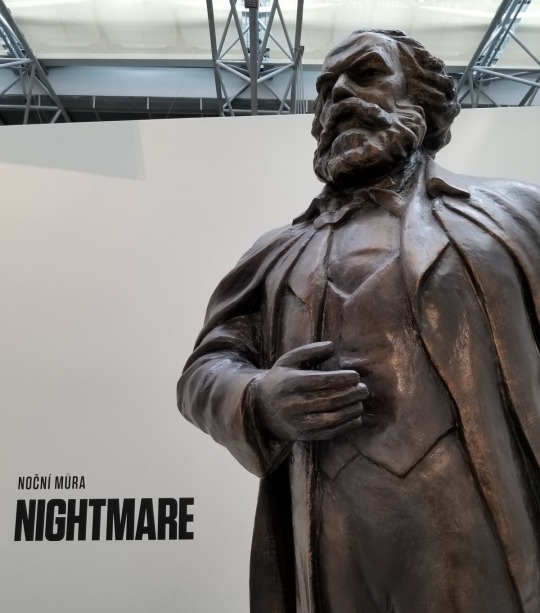
The Museum of Communism is a great stop for anyone interested in learning about the Czech Republic’s troubled history under Soviet influence. It is heavy on reading and light on actual artifacts, but it is a fascinating look into the history of Soviet communism from the perspective of a country that suffered under it firsthand.
And best of all, we could take pictures–meaning that we could skim through the exhibit while recording their text for later digestion.

The exhibit starts in the 1930s. Much like Poland, post-WWI Czechoslovakia was finally free after centuries of domination by the Austro-Hungarian Habsburg Empire. But the shadow of Fascism is looming on all sides. Intent on defending themselves from Hitler’s armies, the Czechs began a massive construction project to fortify their borders. Had it been completed, hundreds of fortified bunkers with overlapping fields of fire would have stretched across the German border.
These fortifications proved futile--not because of any design failure but because of a political one. Rather than send his takes to break through the Czech defense line, Hitler bullied the rest of Europe into forcing Czechoslovakia into giving up its borderlands to Hitler without a fight. Hitler claimed that the annexation was justified on the grounds that the inhabitants of these borderlands were ethnically German, despite the fact that the territory had always been politically Czech. (Not entirely unlike Russia's stance on annexing Crimea from Ukraine in 2014.)
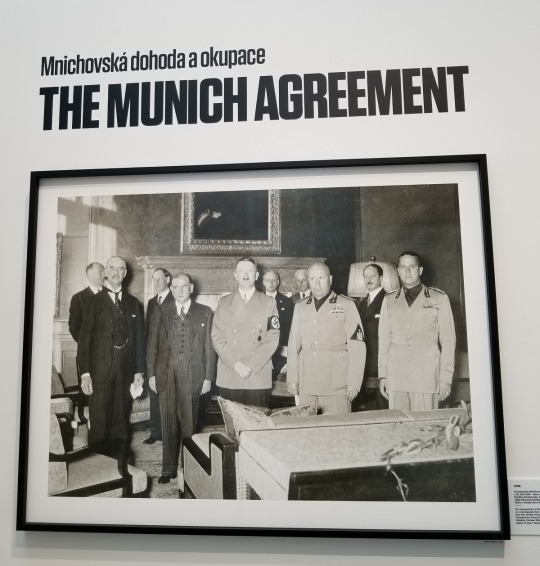
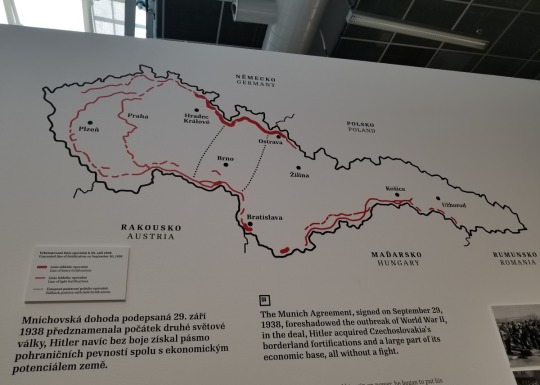
The decision to give Hitler what he wanted was called the Munich Agreement, and it was signed by the leaders of Britain, France, and Italy. Note that the leader of Czechoslovakia isn't on that list--he had to wait in a Munich hotel room while his so-called allies signed away his country's defenses in a vain attempt to appease the unappeasable Nazi war machine.
Although Britain and France revoked their support of this agreement after Hitler inevitably annexed the rest of Czechoslovakia by force, many Czechs continue to resent them for what they call the Munich Betrayal. I can’t say that I blame them.


Five years later, Czechoslovakia was liberated by the Soviet army. Out of the frying pan and into the fire.
The rest of the museum covers various aspects of life under communist rule. Food, medicine, and other essentials were scarce, working conditions became longer and harder, and freedom of expression was nonexistent.
Despite continual promises to the contrary, the Soviet-backed communist government nationalized one industry after another until there was virtually no legal private enterprise in the country whatsoever. Even simple transactions between individuals, like someone fixing a neighbor's door in exchange for food, were strictly prohibited.

Soon enough, the nationalized industries were struggling to pay their debts and keep up production. There were shortages throughout the country--people had money but nothing to spend it on. In response, the government enacted a series of currency "reforms." Savings and debts were devalued by 43%, and people had to exchange any cash they had for new currency, losing 80-98% of the value in the bargain depending on how much they had to exchange.

As a Soviet satellite state, the Czechoslovak Socialist Republic was made to join Comecon, a (retroactively hilariously named) protectionist trade organization run by the Soviet Union. Through Comecon, resources were taken from wealthier member countries and given to poorer member countries, and member countries could not trade with outside countries unless they did it through the Comecon organization. In Czech, the acronym for Comecon was RVHP, which inspired a joke that the acronym actually stood for a phrase that translates roughly as "rejoice, be merry, we have nothing, so let's share it."



Throughout the period of communist rule, propaganda was all-invasive. It was plastered on walls, shouted from public speakers, presented as journalism in newspapers, and even built into the skyline. Prague was chosen as the site for a massive stone monument to Stalin. It took ten years and billions of dollars to create--and it was blown up just seven years later during a rebranding movement under Khrushchev.

The bulk of the propaganda that wasn't focused on worshiping Soviet leaders was focused on idealizing poor, uneducated workers and vilifying the (rapidly shrinking) educated middle class.
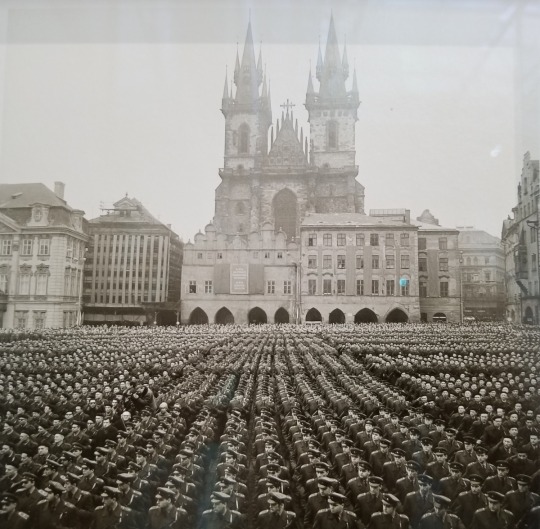
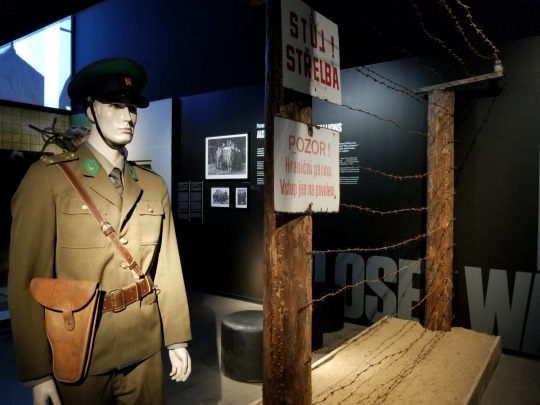
In a stark, black-walled corridor, the museum tells the story of the Czechoslovakian military and police forces under communist rule. Despite being a supposedly independent country, Czechoslovakia's army was fully integrated into Soviet chain of command, with Russian generals in charge of every detail. Borders were tightly sealed, and 450 Czechoslovakian citizens were killed trying to cross the Iron Curtain. An additional 600 Czechoslovakian and Soviet soldiers were killed by people trying to escape.

And then there was the secret police, who used bribes, blackmail, and outright torture to create an army of informants. It was through these informants that such petty crimes as fixing a neighbor's door could be effectively policed and punished. If someone was suspected of hiding something, they were and their loved ones were beaten, drugged, and even executed. Forced labor camps once again sprang up throughout the country in a chilling echo of Nazi occupation. Fear and mistrust were the currency of Communism’s power.
In the 1960s, a new generation of Czech Communist party leaders began to adopt a more moderate, liberal stance. Censorship was eased, elections became more democratic, and limited trade with the West allowed department stores to fill with goods once again.
And the Soviets wanted none of it. Overnight, a Soviet army descended on Prague, and virtually all of the Czech Communist leaders were imprisoned or executed. A new Moscow-approved government was installed in its place, and for the next twenty-one years, things steadily got worse.

Finally, in 1989–days after the fall of the Berlin Wall–the dam broke. A student march that had originally been organized by the Communist youth to celebrate the defeat of Fascism turned into a protest against the ongoing repression of the Soviet-backed Communists. Tens of thousands of students were arrested or brutally beaten as they ran away. But unlike the Tiananmen Square massacre that had only recently occurred in China, the government’s actions only stoked the fires of resentment.
Working-class parents–the backbone of the regime’s support–were outraged by their children’s treatment and immediately joined the protests. Hundreds of thousands of people from across the country flooded Wenceslas Square each evening, and within days, the Velvet Revolution was complete. The Soviets packed up and left, and Czechoslovakians were able to vote in truly free elections for the first time in over 50 years.
(For better or worse, the again-newly independent country of Czechoslovakia was short-lived, breaking up several years later by mutual agreement into separate Czech and Slovak Republics. But that’s a story for some other museum.)
Having been run through the emotional gamut and in desperate need of additional caffeine, we decided to stop at a nearby café before going on to our next sight. But before the café, however, we followed a Rick Steves recommendation and peeked into the fabulous Municipal House that I mentioned in our last post.


The interior is stunning. Not gaudy, but colorful and vivacious. It was like stepping into a 1920s period movie.

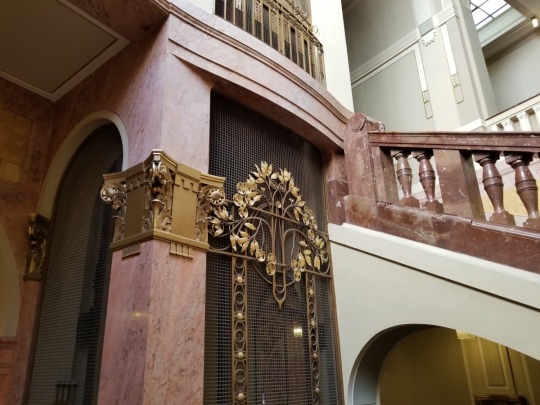
We also noticed a sign indicating that the Slav Epic was currently on display at the Municipal House. We didn't appreciate what that meant at the time, but we soon would.

Our next visit was to the fabulously fun Mucha Museum. I didn’t know much about Mucha before visiting, but that says more about me than him. Mucha was one of the founders and basically the patron saint of the Art Nouveau movement. And tragically, we weren’t able to take pictures inside the museum.
Unlike the great painters of previous eras, Mucha was a commercial graphic artist. His best-known works were posters–advertisements for plays, beer, and cigarettes.
Some of his best known works are also the ones that launched his career: posters for the plays of actress Sarah Bernhardt, who fell in love with Mucha’s unique style after he made his first posters for her performance in Gismonda.
He followed his smash hit debut with posters for Bernhardt's leading performances Medee, Lorenzaccio, and Hamlet--in which she cross-dressed as the titular protagonist.
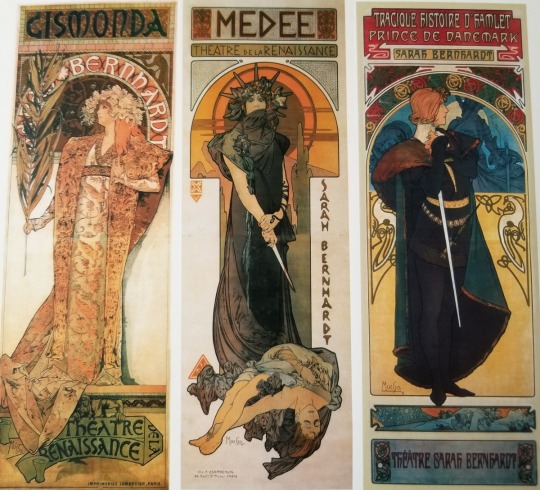
(We couldn't take pictures inside the museum, but we could certainly take pictures of the postcards we bought.)
A recurring motif we noticed in Mucha’s works are nested circles, sickles, and other geometric patterns. Mucha was deeply interested in spiritualism and sacred symbology–he even became a leader of the Freemasons in Czechoslovakia later in life.
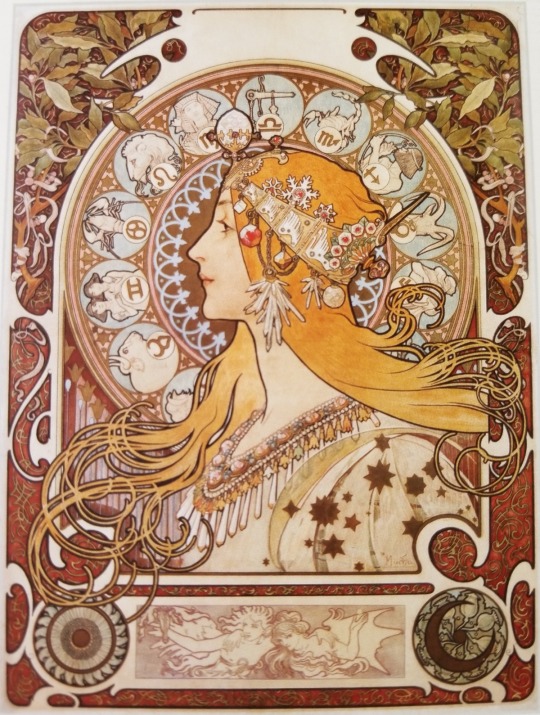
Since he spent time in Prague in his early life, Jessica and I can’t help but wonder if Mucha’s obsession with intertwining geometric shapes was in any way inspired by the city’s enchanting astronomical clock.
But there’s more to Mucha than poster art. After nearly a decade of skyrocketing fame, Mucha was dissatisfied at being essentially little more than a glorified ad man. He wanted to create something that expressed his spirituality. The culmination of this desire was Le Pater, a beautiful and hauntingly illustrated edition of the Lord’s Prayer. It was printed in miniscule numbers, and reproductions are still hard to come by.
We were able to see a copy opened to a dark and haunting illustration of a godlike figure looking down on a crowd of people prostrated and lapping eagerly from a flowing stream.
From then on, Mucha’s artistic vision branched in two directions. He explored traditional oil-on-canvas paintings, culminated in his masterpiece 20-canvas cycle The Slav Epic, which far too large and important to be kept in such a small museum as this one. He also continued his poster art, but instead of using his art to sell cigarettes and entertainment, he used it to sell a Czech national identity. Featuring traditional Slavic costumes and mythological figures, these works helped inspire Czech national pride and propel awareness of Czech culture into the heart of Western Europe.

Sadly, this effort was not appreciated by Hitler’s invasion force in 1939. Mucha was arrested by the military, and though he was eventually released, his health never recovered and he died shortly thereafter.
I have to say that I’ve become a Mucha fan. His art is easy to like and manages to inspires hope and optimism even when he’s dealing with the darker sides of human nature.
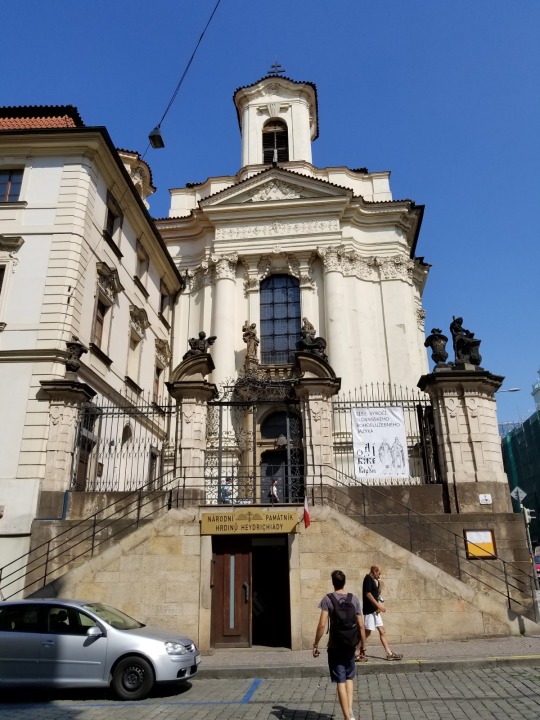
Our final major stop of the day was another site related to the Nazi occupation–the Orthodox church where Czechoslovakian paratroopers Jozef Gabcik and Jan Kubis made their last stand against an army of Waffen-SS troops.
It’s okay if you aren’t familiar with these two names. I wasn’t either. But you should be. With the help of British special forces and Czech resistance fighters, these two men carried out the highest-level assassination of a Nazi leader in all of WWII.
Reinhard Heydrich was Himmler’s right hand man, one of the chief architects of the Holocaust, and a personal favorite of Hitler, who called him the man with the iron heart. Even among the Nazis, Heydrich was feared and respected as a cold-hearted monster. In 1941, he was rewarded for his loyalty and ambition by being made acting governor of the conquered Czechoslovak territories. A brutal man, he quickly earned the nickname Butcher of Prague.
Heydrich saw the Czechoslovakians as a mongrel race--a mixed bale of wheat and chaff to be ruthlessly sorted into separate piles. Those judged to be "good stock" were to be sent to Germany for reeducation. The rest were to be put to work or shot. The land of Czechoslovakia, successfully emptied, would then be repopulated with good German settlers.

I was particularly struck when I saw the museum's set of stained wood chips. SS officers would hold the wood chips up against a person's skin, hair, and eyes to judge what racial class they belonged in, from Aryan birch to Nubian ebony. Something about the twisted combination of brutal simplicity and horrific absurdity just perfectly encapsulates the essence of Nazism.

In response to this oppression, nine Czechoslovakian paratroopers stationed in Britain were selected for a high-risk mission to assassinate Heydrich. Gabcik and Kubis lead the mission.
Things went wrong from the start. They were airdropped into Prague, which was over 50 miles from their intended landing zone outside the town of Pilsen (home of Pilsner-style beer). Undaunted, the paratroopers joined up with a local resistance cell and secretly began to organize for the assassination.
When the resistance fighters eventually figured out what the paratroopers' mission actually was, they desperately plead with their contacts in the Allied command to have the mission called off. If a Nazi governor was assassinated, the reprisals against the Czechoslovakian people would be cataclysmic. At least some members of the Allied command seemed swayed by their arguments, but they never got around to actually calling the mission off.
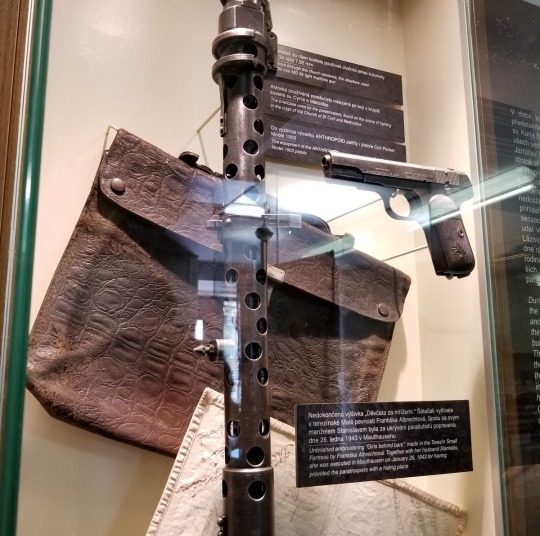
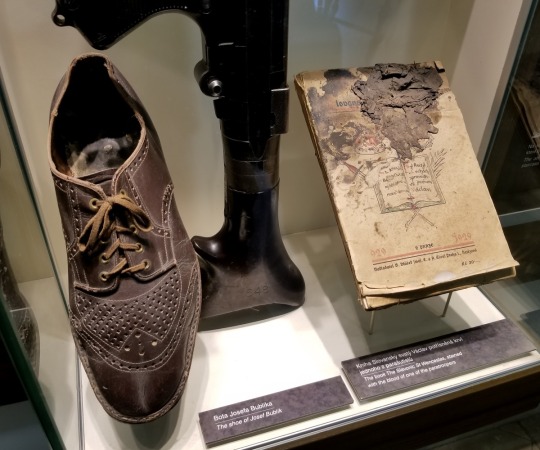
On the day of the assassination, almost everything went wrong again. The plan was for Gabcik and Kubis to ambush Heydrich’s open-topped car as it went around a slow hairpin turn on the road to his office in Prague Castle. But their machine gun jammed, and the backup grenade exploded outside of Heydrich’s car instead of inside it. A brief gunfight ensued, but in the shock of the moment the paratroopers and the Nazi governor emptied their pistols at each other without landing a hit. Gabcik and Kubis managed to escape, certain that they had blown the only chance they would ever get.
But what they did turned out to be enough. Heydrich had been more severely wounded by the shrapnel of the grenade than they realized. After an excruciating week of sickness and surgeries, Heydrich died of sepsis from his wounds.
The reprisals came, and they were even more vicious than the Allies' worst fears. Anyone suspected of knowing anything about the assassination was tortured and executed, and two entire villages were wiped out on mere suspicion of hiding the assassins. In the end, around five thousand Czechoslovakians were killed in direct response to Heydrich’s death.
It was only in response to these atrocities that Britain and France decided to withdraw from the Munich Agreement, which we'd learned about that morning.
For days, it seemed like the Gabcik, Kubis, and the rest of the paratroopers might make it. They had been hidden in the crypt of an Orthodox church in central Prague, and despite the massacres taking place above ground, no one was talking.
But one man finally broke, deciding that the good of protecting the paratroopers wasn't worth the evil of allowing innocent Czechs to be murdered by the Nazis. This member of the resistance didn't know exactly where the paratroopers were hiding, but he went to the Gestapo and told them everything he did know. The other resistance members that he named were rounded up along with their families. One by one, they were tortured and executed until the Nazis were finally able to trace a bloody trail back to the church where the paratroopers were hidden.
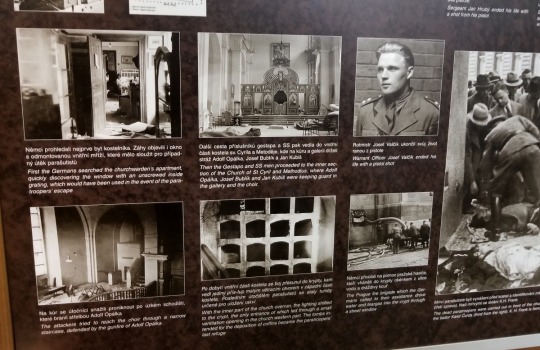
After a two-hour standoff against an army of 750 SS troops, all the paratroopers lay dead, either by Nazi bullets or their own.
The informant, now a reviled traitor to his people, continued his work for the Germans until the end of the war, when he was executed as a traitor.
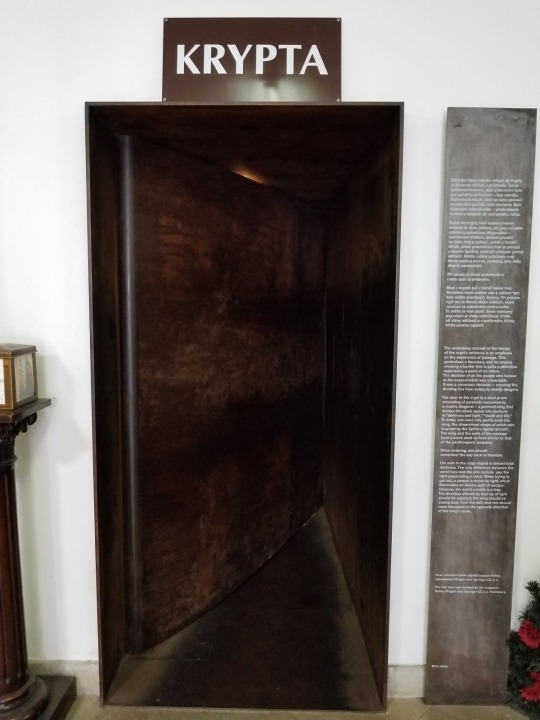
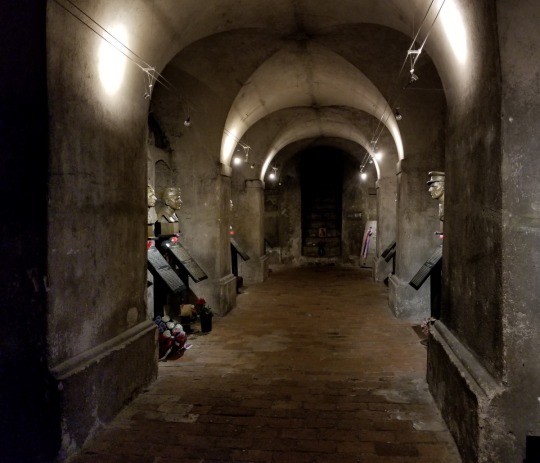
An ominous metal door leads from the museum into the crypt itself, where the last surviving paratroopers took their own lives. Today, it is filled with memorials to the paratroopers.



The alcoves filled with letters and handmade tokens of remembrance are a testament to the reverence that the Czech people hold for these heroes, regardless of the Nazi wrath their act of resistance incited.
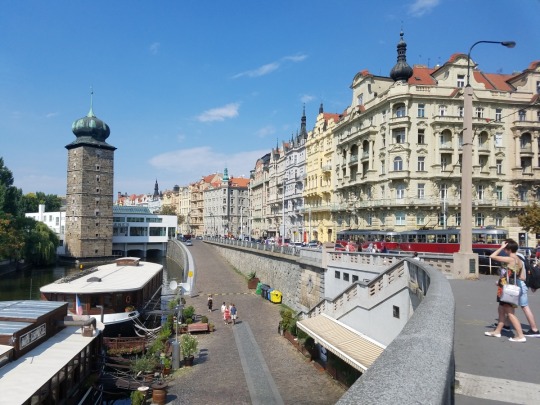

Finally taking a break from the dreary topics of the day, we walked down to the riverfront and up the esplanade. We saw a ton of gorgeous old buildings, as well as the humorous and much newer “dancing house.”
Across the river, we could see the Prague Castle complex standing up on its hill.
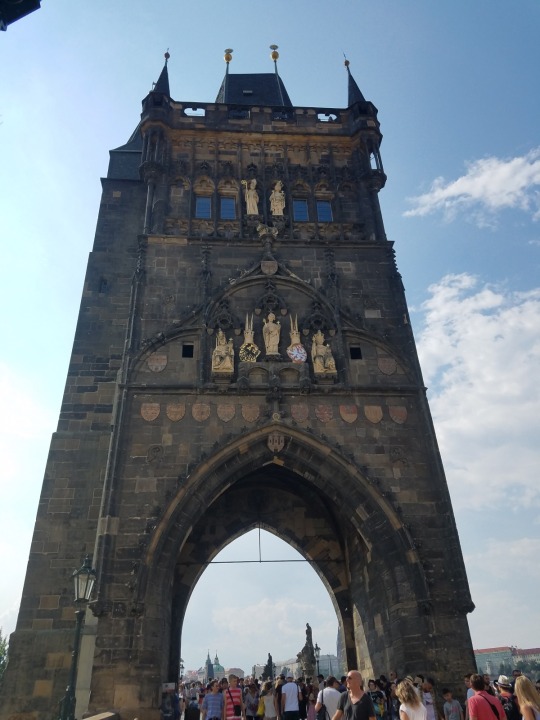

We ended the day’s sightseeing with a walk across the pedestrian Charles Bridge. Built over 600 years ago, this bridge made Prague a nexus of East-West trade. Today, it is crowded with tourists, buskers, and trinket hawkers. But that doesn’t make it any less striking with its massive tower, lines of statues, and great views of the Castle Quarter across the river.

At this point we were just about dead on our feet. Especially Jessica, who had gotten basically no sleep up in the sweltering loft bed the night before. So we walked a few blocks over to find a less crowded spot, then called an Uber to take us home. We took a fair number of Ubers in Prague, and they were always a pleasant and affordable experience.
All in all, it was a bit of a depressing day, but in a good way. It’s important to know and appreciate the darker history of places. Not only does it make us more informed and vigilant citizens of the human race, it makes the beauty of places that much more meaningful in light of the ugliness that it has managed to outlive.
Next Post: The Slave Epic (and a Break for Beer)
Last Post: Prague–Old and Nouveau
0 notes